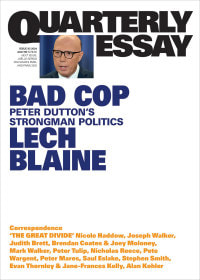 An excellent study in the Machiavellian cunning of Peter Dutton. Lech Blaine is a Queensland writer and Journalist, whose previous work includes the memoir Car Crash and the Quarterly Essay, Top Blokes. It seems fitting that the Queenslander has been asked to take on the subject of Peter Dutton, former Queensland policeman and now leader of the Liberal Party opposition. Blaine writes a witty and entertaining biography of Dutton (or “Dutts”, as he is known to his mates), yet beneath the japes lies a bubbling anger at the more notorious aspects of Dutton's politics. His treatment of asylum seekers, minorities and the Indigenous community, to name a few. Pauline Hanson has often been an admirer of Dutton, and that perhaps will tell the reader enough. Dutton also feels most at home in the company of shock jocks like Ray Hadley, railing against so-called cultural elites like the ABC. Most of Dutton's negative attitudes Blaine traces back to his time as a policeman, where he saw the worst aspects of criminal behaviour at close hand, including violence and the sexual abuse of minors. Blaine claims that Dutton sees the world through this dark prism. Progressive lefties may want to see the best of human nature, but Dutton has seen reality for himself. Do gooders in the form of social workers and the plodding judicial system have only coddled violent criminals. Pulling back the lens and taking an historical view, the essay also traces the transformation of the Liberal Party, from highbrow Menzies, through middlebrow Howard, to lowbrow Dutton. The party once appealed to moderate, middle class Australians, but now stokes fears of xenophobia and feelings of grievance. The party has wilfully abandoned blue ribbon inner city seats, making possible their take over by Teal independents. The future strategy for the Liberals is to pick up seats in outer suburban Australia. But as Lech Blaine argues, this is unlikely to work. Bad Cop: Peter Dutton's Strongman Politics makes for a bracing read. Lech Blaine provides penetrating analysis and an historical perspective on events, with fascinating sections on Queensland culture and politics, most notably the notorious Joh Bjelke-Petersen years. The portrait that emerges of Dutton is of an almost Shakespearean villain, a modern day Iago, whispering dark suspicions into the nation's ear, yet a man destined to come undone by the mistrust and cynicism he has sown. Bad Cop: Peter Dutton's Strong Man Politics: Quarterly Essay 93, by Lech Blaine. Published by Black Inc. $27.99 Review by Chris Saliba 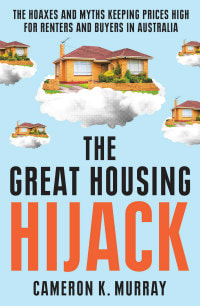 An academic explains how the housing market really works, and why government intervention is needed. Cameron K. Murray is an economist and expert on housing markets. At various stages in his life he has been a renter, a home owner and landlord, and so comes at the problem of housing affordability not only from an academic perspective, but also lived experience. There is much received wisdom that Murray turns on its head in The Great Housing Hijack. For example, we learn that rents have stayed steady at 20 percent of income for the last several decades, and that historically they track at roughly that percentage. Or the fact that developers stagger the release of housing to capitalise on the best price. This is all part of what Murray describes as the “five housing market equilibria”: asset prices, rents, location, density and the absorption rate (the aforementioned release of housing). These equilibria have interacted historically to give us a property market that doesn't veer too much off a predictable path. (Remarkably, archaeological records from Mesopotamian stone tablets show property price similarities to today). In short, the market left to its own devices produces big inequalities. High prices and the concentration of wealth are the result. We now have a market where landlords are competing with each other for properties, pricing out owner-occupiers. Murray writes: “Historically, housing markets were always divided between the haves and have-nots. What we are seeing since the 1980s is a return to the normal operation of the housing market after the post-World War II decades of heavy government intervention.” Nor does the future of the market look hopeful. While many commentators may call for an increase in supply to reduce prices, the reality is that the two thirds of the population who own or have mortgages do not want to see the value of their assets diminish. Even a 10 percent decrease in the values of Australian homes would be a disaster, wiping billions of dollars off the housing market. What is the solution? A simple one, as it turns out. The reader may be surprised to learn it was a Liberal prime minister, Robert Menzies, who in the post war period championed public, affordable housing. It was a time when soldiers were returning from war, creating the conditions that made it politically palatable to offer cheap housing. War heroes couldn't be treated shabbily. The Menzies policy of building houses at a rate of knots worked, increasing home ownership to a high of 70 percent. Murray suggests we treat affordable housing as we do roads, schools and hospitals, as a right for all citizens. He suggests we follow the Singapore model of building housing and selling it at essentially cost price. The system would work as a parallel market to the private one. A book of hard truths we need to face, with a solution that is well within reach should we grasp it. The Great Housing Hijack: The Hoaxes and Myths That Keep Prices High for Renters and Buyers in Australia, by Cameron K. Murray. Published by Allen & Unwin. $34.99 Review by Chris Saliba 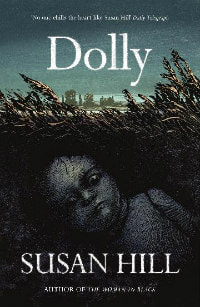 A mistreated doll haunts an old house in this new reissue of the Susan Hill classic. In the English Fens, a marshy region in Eastern England, lies the hamlet of Iyot Lock. Two children, cousins Leonora and Edward, are visiting their Aunt Kestrel, who has a large, dilapidated house there. Edward is a timid child, sensitive and withdrawn, while his cousin Leonora is dark, brooding and possibly evil. She complains that she would like a beautiful doll, the type of which she describes to Edward, who in turn makes a painting of the imagined toy. She wants an Indian bride doll, with elaborate clothes and jewels and braiding in its hair. When Aunt Kestrel visits London, she buys Leonora a doll, thinking this will satisfy the child. But it turns out it's not the sort of doll she wants at all. Instead she receives a baby doll, made of china, with blue eyes and a rosebud mouth. In her fury Leonora throws the doll at the marble fireplace, violently cracking its head open. The broken doll spooks Edward. He hears it crying out in the night. Finally, after several days of the haunting cries, he decides to bury the doll in the church's graveyard, with chilling consequences. Every page of Susan Hill's Dolly drips with dread and menace. She brings to life the creepy English Fens with her pared back but evocative prose. A sense of suspense and looming horror keep the reader fully immersed in the story. The characters are believable and well-drawn. The foul tempered Leonora is truly frightening. Because the author creates such an authentic atmosphere, one that causes the heart to tremble, the supernatural aspects of the story also pay off. It feels like a nightmare from which the sleeper struggles to wake. Classic horror for fans of Angela Carter and Shirley Jackson. Dolly, by Susan Hill. Published by Vintage Arrow. $22.99 Review by Chris Saliba 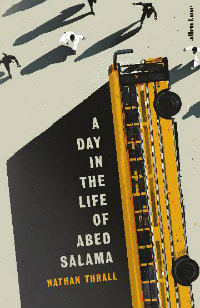 A tragic accident is told in harrowing, intimate detail. In 2012, five-year-old Palestinian boy Milad Salama was scheduled to go on a school trip. His family lived in the impoverished town of Anata on the West Bank, where infrastructure such as roads and housing were of a poor quality. The bus traveled along the Jaba road - a road notorious for its safety issues. Conditions were bad on the day of travel, with an approaching storm making visibility difficult. An oncoming truck collided with the bus and seven children died. Help was late to arrive, which if it had come earlier could perhaps have saved lives. A Day in the Life of Abed Salama describes the events of that awful day. Through a brief biographical sketch of Abed Salama, Milad’s father, the reader also gets a short history of the Israeli-Palestinian conflict and how occupation directly affects the lives of Palestinians. The genius of Nathan Thrall’s book is how it shows personal lives caught up in larger historical forces. With its focus on people and their relationships to each other, the book reads very much like a novel. A humbling book that concentrates on the pain and suffering of many Palestinian lives. A Day in the Life of Abed Salama, by Nathan Thrall. Published by Allen Lane. $36.99 Review by Chris Saliba  Nine new stories from Jhumpa Lahiri Acclaimed British-American writer Jhumpa Lahiri moved to Italy some ten years ago, and now writes in Italian. Her new collection, Roman Stories, comprises nine stories, with Rome featuring as both place and state of mind. They are translated from the Italian by Lahiri and Todd Portnowitz. Anyone familiar with the author's writings will know she concentrates on the minutiae of daily life: the particular slant of light during a summer afternoon, the memories a favourite restaurant conjures, warm and inviting houses. Lahiri interweaves these descriptions with various narratives about middle-class life, relationships between husband and wife, parent and child, and the ups and downs of close friendships. A particular theme that recurs is the feeling of being an outsider, of locals suspicious, even hostile, to foreigners (Lahiri is the daughter of Indian immigrants). The stories have a ruminating, Proustian feel, of memory in search of lost time, of raking over old personal events and trying to glean meaning from them. Lahiri's fiction is deceptively simple and easy to read, yet her writing, while subtle, is psychologically rich. An intimate and highly enjoyable collection, for readers of Rachel Cusk and Deborah Levy. Roman Stories, by Jumpa Lahiri. Published by Picador. $34.99 Review by Chris Saliba 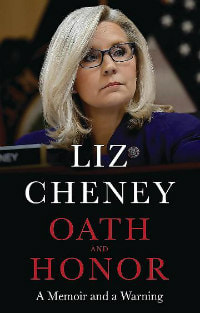 The decline and fall of the Republican Party, as told by one of its own Liz Cheney's memoir of her time in Congress is a surprisingly good read, a gripping minute-by-minute account of how the Republican Party fell to Donald Trump. It's a story of Republican colleagues Cheney had thought were good and decent, hypocritically supporting a man they in private loathed. Not only that, when it became obvious Trump was dangerous and a threat to American democracy, weak-kneed Republicans continued to trumpet his lies. As Cheney makes clear, Trump didn't do it on his own, he had a legion of enablers in the Republican Party. They should have known better. For non-American readers who've always marveled at how forthright American patriotism is, Cheney makes you understand why. She discusses the importance of the constitution and how America's freedoms were hard fought for. To be a patriot means putting democracy and the constitution above one's political party. An excellent insider's account from someone who has rubbed shoulders with a lot of the main players in the Republican Party, providing a stunning amount of detail, but also some fascinating thumbnail portraits. Oath and Honor: A Memoir and a Warning, by Liz Cheney. Published by Headline. Review by Chris Saliba 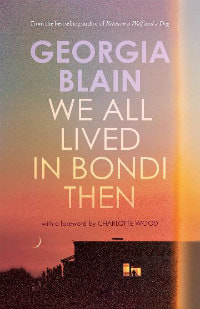 A posthumous collection of nine stories from Georgia Blain Australian writer Georgia Blain died in 2016 at the relatively young age of fifty-one. She already had a critically acclaimed body of work behind her, and surely there would have been more to come. We All Lived in Bondi Then is a collection of short stories that Blain wrote between 2012 and 2015, which she intended to publish after what was to become her final novel, Between a Wolf and a Dog. The nine stories that comprise the volume appear now for the first time. Blain sticks to close and intimate subjects – elderly and sick parents, the difficulties of romantic relationships, childhood traumas, complicated friendships. The stories are written in a simple and immediate prose, detailing emotions and states of mind with an elegant clarity. The main appeal of this collection is Blain's ability to map the human heart – our failures, fears, anxieties and occasional triumphs – creating a compelling work of great authenticity. A highly readable, absorbing collection that lingers in the memory. We All Lived in Bondi Then, by Georgia Blain. Published by Scribe. $29.99 Review by Chris Saliba 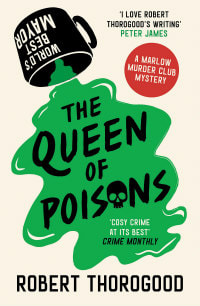 When the Mayor of Marlow suddenly drops dead after a seemingly innocuous cup of coffee, amateur crime sleuths Suzie Harris, Judith Potts and Becks Starling set out to solve the mystery. In the idyllic English town of Marlow, local Suzie Harris decides to look in on a council meeting. Her intentions aren’t particularly civic. She intends to find out who the weakest council members are, the ones who can possibly be influenced, or bent to Suzie’s will. The reason? Suzie always has a side project going, and she wants to install a Japanese pod-style hotel in her backyard. She needs council approval. While watching the meeting get ready to take place, she notices Mayor Geoffrey Lushington make himself a coffee. Minutes later he keels over, dead. The first thing Suzie does is to call her good friend, Judith Potts. It’s clear they have another murder to solve. There are three women - Suzie, Judith, and their friend Becks Starling, wife of the local Vicar - who form the crime solving trio. Judith is the most forthright of the group. In her early seventies, her style is crash or crash-through. Middle-aged Suzie is always a step behind Judith and shares her gung-ho approach. Becks is the more diplomatic of the trio, offering apologies for toes trodden on and clarifying to suspects and persons of interest that they are indeed not the police, despite their air of brash confidence. The trio are early on the scene of Geoffrey Lushington’s murder, and soon start trespassing on detective sergeant Tanika Malik’s investigative turf. She knows the women well from previous murder cases, and realising that they are an unstoppable force, decides to give them civilian advisory roles, including official looking lanyards. The women are soon making inroads into the case, especially the unstoppable Judith Potts, working their way through the town’s suspects until the unlikely killer is caught. The Queen of Poisons (the title refers to aconite, the poison used to kill Geoffrey Lushington) is the third in Robert Thorogood’s Marlow Murder Club series. While the novel does read like something made for television (Thorogood is a successful TV writer), there is much to enjoy in its pages.The pacing is juicy and the humour is terrific, with the characters of all three women astutely drawn. They are all like people you’ve met in real life - the insufferably pushy Judith Potts, the blowsy Suzie Harris and Becks Starling, forever saying sorry and doing much of the trio’s emotional labour. The plot is well worked out and ticks like a finely tuned watch, with all the various parts falling nicely into place. The final ending has a bit of the pantomime about it, with the characters, situations and motivations all slightly nutty and overwrought. But nonetheless, this reader couldn’t pick the killer and was indeed surprised at the real culprit. A brilliant entertainment with a cast of characters you will immediately love. The Queen of Poisons, by Robert Thorogood. Published by HQ Fiction. $32.99 Review by Chris Saliba 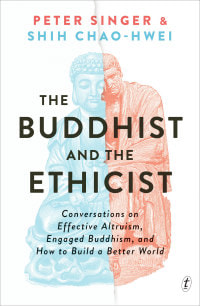 Two accomplished thinkers consider a range of controversial subjects. Australian philosopher Peter Singer met Shih Chao-Hwei, a Buddhist monk based in Taiwan, while visiting Taiwan in 2002. A Chinese edition of his book, Animal Liberation, had just been published with an introduction by Shih, and the two found they had much in common, despite coming from different philosophical and theological backgrounds. Singer suggested they participate in dialogues together to further flesh out their differences and similarities. The resulting book is the work of five years of on-again, off-again discussions. The Buddhist and the Ethicist ranges over all the big topics of interest to a Western audience: women and equality; sexuality; animal welfare; embryo research; abortion; the death penalty; euthanasia; the death penalty and war. An early chapter also discusses ethics and key Buddhist concepts such as karma and nirvana. The tone of these dialogues is respectful and, as you'd imagine, quite serious. Most readers of Singer's work will be already familiar with his often controversial views on euthanasia and embryo research. What gives the book a special interest are Shih's views on tricky ethical questions, as interpreted through a Buddhist lens. While both Singer and Shih are on the same page for a lot of subjects (Shih has championed many progressive causes in Taiwan, notably same-sex marriage), their subtle differences make for thought provoking reading. As such, the book provides an education in the subtleties of Buddhist thought, especially the importance of karma. Big questions are considered thoughtfully in this fascinating philosophical exchange. The Buddhist and the Ethicist, by Peter Singer and Shih Chao-Hwei. Published by Text Publishing. $36.99 Review by Chris Saliba 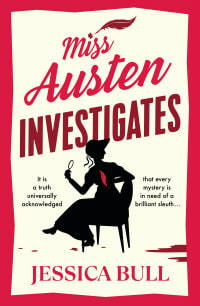 A fictionalised 20-year-old Jane Austen must use all her wits to solve a murder. It's 1796, Hampshire, England. Jane Austen is just about to turn twenty. While attending a ball at Deane House, with some thirty families in attendance, a woman is found dead in a closet. She's been violently bashed over the head. It is Jane who recognises the woman – Madame Renault, a French milliner who had recently set up shop at a local market. Jane had bought some items from her. The investigation of the murdered woman officially falls to the magistrate for the country, Richard Craven, who is also Jane's uncle. When the dead woman's necklace is found in the possession of Jane's brother, Georgy, he is accused of grand larceny. It is thought he at best stole the necklace, for which he is charged, but at worst could be guilty of murder. Grand larceny carries the death sentence. Georgy is mute, unable to speak due to some type of learning difficulty. He communicates via a rudimentary sign language. Jane and her family know in their heart of hearts that Georgy is incapable of murder or theft, but magistrate Craven is a by the book man. He refuses to listen to Jane's pleas. It quickly becomes clear that it is up to Jane to clear her brother's name, but a woman's place in 18th century England is to be seen and not heard. Nonetheless, Jane begins a haphazard yet impassioned investigation, often making mistakes and accusing the wrong people. Hers is a small community where everyone knows everyone, and Jane's persistent inquiries rub many up the wrong way. With a two week deadline before Georgy's case goes to court, can Jane unravel the mystery and find the killer in time? Of all novelists, Jane Austen is the most astute judge of character. So it makes sense to imagine her as a crime sleuth. To some it might seem like a cheesy premise. Yes, there is a bit of the clearly ridiculous here (the novel's timeline predates the beginning of crime fiction by about 50 years). But for readers who are happy to go along with Miss Austen Investigates as a pleasant bit of entertainment, there is much to enjoy. Jessica Bull does a terrific job of creating a believable 18th century England – its people, fashions, customs and laws. In this way, the novel works as a nuanced explainer of the Regency Era. This is done in a way which works seamlessly with the plot, anchoring the book in time and place. Even the descriptions of furniture and kitchenware give some nice little surprise touches. The whodunnit aspect works well, with the story well paced over four hundred pages and the final reveal a genuine surprise. The murderer's motivation is neatly explained in terms of social and economic expectations, making the book both instructive and entertaining. If you're an Austen fan looking for a frolic, then this is the perfect outing. Miss Austen Investigates, by Jessica Bull. Published by Michael Joseph. $34.99 Book review by Chris Saliba |
AuthorNorth Melbourne Books Categories
All
Archives
March 2024
|
 RSS Feed
RSS Feed
